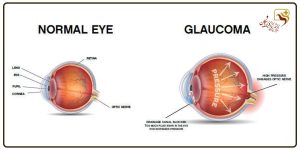بیمار نیکان عضوی از خانواده ماست

blepharoplasty
What is blepharoplasty?
We all desire beauty and youth. Therefore, it is natural to look for a way to rejuvenate the face. Eyelid surgery or blepharoplasty is a procedure in which the eyelid skin is cut and excess fat is removed. Blepharoplasty balances the volume of fat behind the eyelid and untwists wrinkles around the eyes, helping make the face fresher and younger.
Of course, eyelid surgery does not always have a cosmetic aspect and in many cases it is considered a therapeutic procedure. Therefore, before taking action and deciding to perform this procedure, doctor and surgeon should be consulted and the previous cases must be seen. Ask all your doubts and questions in the consultation session so that you can make the right choice with complete knowledge.
Excessive skin and fat on the upper eyelids, in addition to a puffy appearance, sometimes causes the eyelids to become heavy and interferes with a person’s vision. By removing excess skin and fat, a person’s vision can be improved. Additionally, there are three separate areas of orbital fat under the eyes, and the reduction of these fats over time causes the skin to sag. Removing excess fat and skin under the eyes will eliminate wrinkles and tighten the skin.
In most East Asian countries, most young people perform blepharoplasty in order to make their eyes bigger.
In addition, no specific age is considered for this surgery because it is not only for aging-related ptosis, and a person may have genetic puffiness or ptosis at a young age, or be a candidate for surgery to change the shape of the eyelids.
The result of blepharoplasty surgery for elderly people who are in their forties or fifties is permanent and stable for about 10 to 12 years.
Post-blepharoplasty care
- The bruising and swelling of the eyelids will decrease after a few days.
- Using a cold compress speeds up the healing process.
- Do not rub your eyes because this will seriously damage the eyes and the result of the procedure.
- Normally, thin bandages are placed at the incision site and removed after a few days; the stitches remain for approximately one week.
- Sensitivity to light and blurred vision is normal for two days, but if it continues for more than that, surgeon must be informed.
- Contact lenses cannot be used after eyelid surgery and glasses must be worn.
- Swimming is prohibited until the specialist allows.
- Moreover, avoid doing sports and heavy activities until the doctor allows because this will increase blood pressure.
- Protect your eyes from the sun and wind with sunglasses.
- Do not try to use contact lenses for the first few weeks after the operation. Dry eye is the most common complication faced after using lenses.
- According to pre-operative instructions, smoking is not allowed.
- Do not use medicines containing aspirin or naproxen because they can increase bleeding and bruising. If you notice these symptoms, be sure to inform your doctor.
- Use cold water bag continuously for 48 hours to remove eye swelling.
- Avoid doing activities that tire your eyes for a week or two after blepharoplasty because your eyes will be irritated after the operation and can cause serious problems for you.
- Cosmetics and cosmetic pencils can cause eye irritation after the operation, that’s why it is not recommended to use them until a few weeks after blepharoplasty.
- Avoid driving in the first weeks after the operation.
- Take oral antibiotics.
Infection is the most important complication that may be encountered after eyelid surgery. To prevent this complication, the doctor will prescribe oral and topical antibiotics, which you should use regularly until the stitches in eyelid are removed. In general, following hygiene tips can prevent infection. However, you have to wait from 3 to 6 months to see the final result of blepharoplasty.
Complications of blepharoplasty
- Due to the sensitive area behind the eyes, a person’s vision may be impaired;
- Other side effects of blepharoplasty include dry eyes, itching around the eyes, damage to the eyelid muscle, inability to close the eyes, and blinking;
- Be careful in choosing your surgeon. Be sure to see the samples of previous works and make a decision with advice and knowledge. If the surgeon is unable to complete the operation well, it worsens the ptosis, blurring of vision and blocking of the field of vision;
- In addition, if this operation is not performed by a specialist doctor, it will cause complications such as the inability to close the eyes, infection, dry eyes, bleeding, abnormality of the eyes and poor vision;
- Like all other cosmetic surgeries, if the eyelid lift operation is not performed in an accredited center and in a sterile environment, there is a risk of infection;
If you see any signs and symptoms that are variable and different from those mentioned, be sure to inform your surgeon to prevent possible problems.



